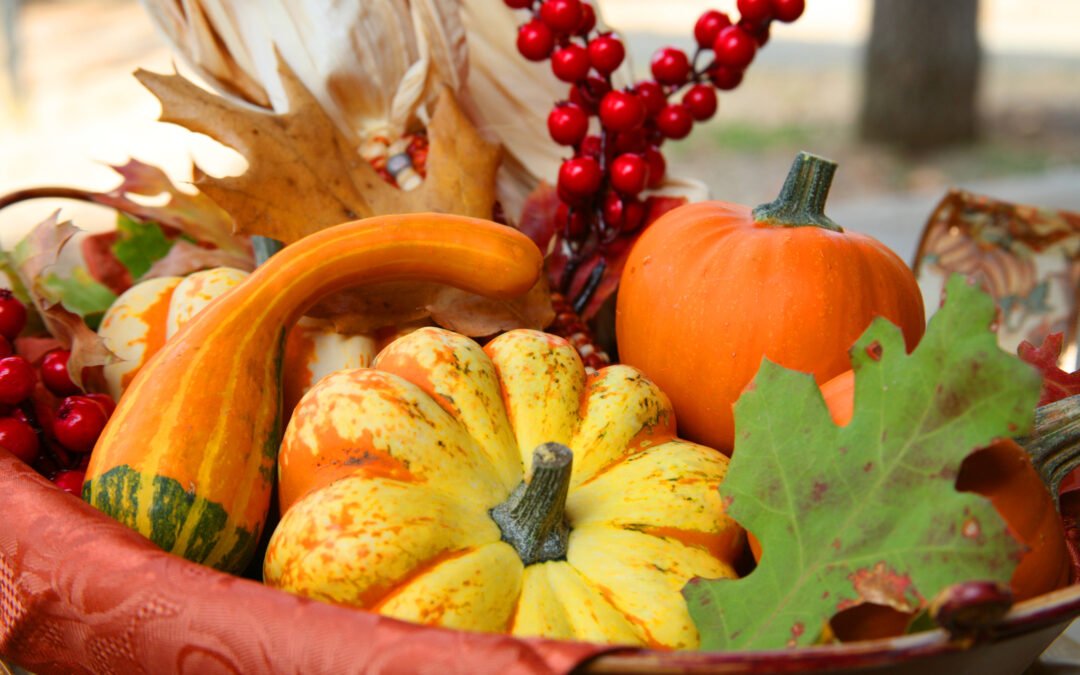Visualize Your Healthy Thanksgiving
First, visualize what you want for the Thanksgiving holiday. Where are you spending Thanksgiving? Who is with you? What food is being served? What is the cheerful topic of conversation? Imagine the ideal day and visualize it every morning when you wake up.
Plan Meals in Advance
Plan recipes, at least three weeks before Thanksgiving Day. Whether you are hosting dinner or going to a friend or family member’s home, planning some recipes before the event is helpful. It’s also an excellent idea to pre-make and taste some recipes, especially if you’re making something you’ve never prepared. If you are hosting dinner, plan your complete menu now. If you are going out to a restaurant, begin reviewing menus. Once you decide on a place, make a reservation.
Prepare Before Overindulging
Prepare now to avoid overindulging in the wrong foods. Emotions and lack of planning sometimes cause overeating. A stressful social situation can trigger emotions that result in out-of-control eating. Planning helps to maximize self-control. Keep in mind:
- It’s perfectly fine to have a dessert on a memorable holiday. But that doesn’t mean you should have a slice of all ten pies at the party. Set a personal limit in advance and pay attention to portions.
- Avoid going to a social or family event hungry. Some people starve themselves in advance, which can lead to overindulgence. Instead, have a healthy snack or light meal a few hours before the event.
Set Priorities
Ask yourself, “Am I trying to do too much?” Set your priorities for the day. If you are asked to help with additional preparations or related holiday events, remember that you don’t have to say yes to everything. You can delegate specific tasks to others. This may help you avoid feeling overwhelmed.
Stay Active for a Healthy Thanksgiving
Plan some physical activity for Thanksgiving Day. Many communities have a “Turkey Trot” fun run or organized walks in the morning. This is a great way to balance the day. Some families like to organize mini-football games in the yard or do a group walk after dinner. Set a plan for staying active during the day.
Breathe or Meditate Daily
Start taking a few minutes every morning to sit quietly and breathe. Set your intention for the day each morning and see yourself feeling healthy. Start with this 1-minute breathing exercise daily to help you slow down, boost energy, and oxygenate your blood:
- Inhale for two counts; exhale for two counts,
- Inhale for two counts; exhale for three counts,
- Inhale for two counts; exhale for four counts,
- Inhale for two counts; exhale for five counts,
- Return to normal breathing and repeat as often as needed.
Prepare for Family Stress
Anticipate family stress/conflict. Create a plan and decide how you will respond to situations that may arise. Several studies show the association between stress and impaired immune function. Managing stress during the holidays is essential to keep your immune system functioning optimally.
Keep Food Safe
For food safety, the USDA recommends refrigeration of perishable food within two hours after cooking or if the outdoor temperature is above 90 degrees. Keep track of how long food is at room temperature and promptly refrigerate leftovers.
Focus on Connecting With Others for a Healthy Thanksgiving
Take a social media break for the day. Spend more time in conversation connecting with family and friends. Keep conversations focused on positive things.
Create a Holiday Spending Plan
Plan holiday spending now. Black Friday happens just after Thanksgiving, so make a spending plan and set boundaries. Several studies have shown that financial stressors can suppress immune function. One study measured inflammatory biomarkers and found that financial stress increased inflammation and decreased psychological well-being. Here are more tips for a healthy holiday season.
Improve Your Mood
Seasonal Affective disorder (SAD) is a mood disorder that often occurs when the season changes with less daylight and colder weather. It usually begins in the fall and can continue into the winter months. Vitamin D may play a role in SAD. People who were treated for SAD with light therapy had increased their vitamin D levels and improved mood. This is an excellent time to check your blood levels of vitamin D to ensure you are within the healthy range of 40-60 ng/ml. Also, get as much sunlight as possible during the short winter days.
Sanoviv is thankful for you, our past guests, and new friends.
We wish you a happy, healthy, and beautiful holiday season.

